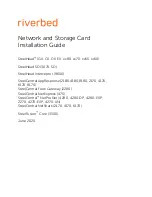
78
ImagePRO-II • User’s Guide
4. Menu Orientation
Using the System Menu
póëíÉã=jÉåì=cìåÅíáçåë=~åÇ=pìÄãÉåìë
System Menu
functions allow you to view and change settings such as HDCP status, input
EDID information, and Ethernet options, and save your changes. You can also save
configurations and formats to a flash drive, and restore them from the drive later.
This section includes the following topics:
•
Setting Black Invalid
•
A Word About HDCP
•
Setting HDCP Capability
•
Viewing Input HDCP Status
•
Viewing Output HDCP Status
•
About System Mode
•
Using a USB Device
•
Setting Ethernet Options
•
Changing Input EDID
•
Setting Display Brightness
•
Locking the Front Panel
•
Saving System State
pÉííáåÖ=_ä~Åâ=fåî~äáÇ
The
Black Invalid
system setting determines whether the output is black when connected
to a signal it cannot process.
Black Invalid
is either
On
or
Off
. The default setting is
On
.
This is a global setting, applicable to all outputs.
^=tçêÇ=^Äçìí=ea`m
The ImagePRO-II supports
High-Bandwidth Digital Content Protection
(HDCP), an
industry-wide content protection system designed to prevent illegal copying of digital audio
and video content across interfaces such as DisplayPort (DP), High-Definition Multimedia
Interface (HDMI), and Digital Visual Interface (DVI). HDCP prevents the display of
encrypted content on devices that do not support content protection.
The HDCP format was designed by Intel
®
Corporation, and it uses an “authentication and
key exchange” procedure to accomplish the required protection. For proper
implementation, products that are compatible with the HDCP format require a secure
connection to a compliant display, such as a projector or monitor.
When an HDCP-compliant display is connected to the ImagePRO-II, an HDCP “session” is
created. In this session (which is transparent to the user), “keys” are exchanged between
the source device (e.g., a Blu-Ray player) and the HDCP-compliant display. The source
device queries the display to ensure that the equipment is HDCP compliant before video is
displayed. Non-HDCP equipment such as a PC will work with any DVI-compliant display,
but HDCP-compliant equipment shows protected content only on HDCP-compliant
displays.
With the HDCP option enabled, the ImagePRO-II accepts encrypted content from an
external source, decrypts the signal for internal processing such as scaling or color
balance, then re-encrypts the output video for display. During this process, all
ImagePRO-II output connectors that are not HDCP-compliant are turned off.
This feature is available on the ImagePRO-II’s
DVI
,
HDMI
, and
DP
input and output
connections.
Summary of Contents for ImagePRO-II
Page 1: ...r d PN 26 0904000 00 Revision 00 f molJff...
Page 13: ...ImagePRO II User s Guide xiii Table of Contents Contact Information 174...
Page 14: ...xiv ImagePRO II User s Guide Table of Contents...
Page 112: ...98 ImagePRO II User s Guide 4 Menu Orientation Restoring Factory Default Settings...
Page 180: ...166 ImagePRO II User s Guide B Remote Control Protocol Legacy Remote Commands...
Page 186: ...172 ImagePRO II User s Guide K r c Upgrading Firmware Using the Web Interface...
Page 196: ...182 ImagePRO II User s Guide Index...
















































